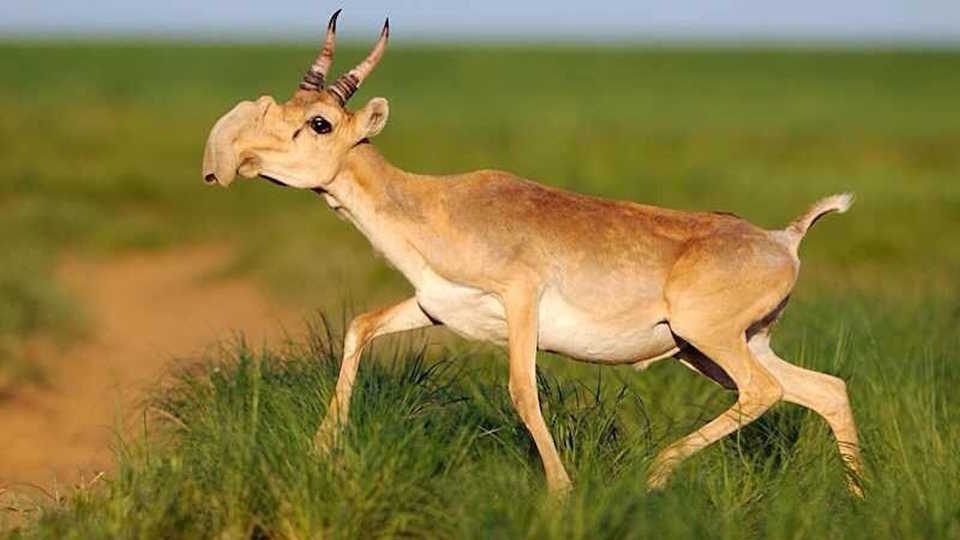Science News
Sand Bucket Challenge

This is not a reindeer gone wild. It’s a saiga, Eurasia’s only antelope. They live in the desert and steppe ecosystems of Russia, Kazakhstan, Mongolia, Turkmenistan, and Uzbekistan, migrating long distances across national boundaries. They are also critically endangered. In fact, according to the Saiga Conservation Alliance (SCA), their numbers declined by 95% in just 15 years.
Like reindeer, saigas have special adaptations that allow them to live in these harsh environments. Their biggest secret to survival, says SCA’s Elena Bykova, speaking at this year’s Wildlife Conservation Expo, is that large snout you see. The saiga nose acts as both a heater and filter—warming frigid air during extremely cold winters, and cleaning the dusty air during hot summers.
Their stunning horns can be dangerous: Males fight to the death to mate with a herd of female saigas. And their horns are one of the prime reasons saigas are in trouble. Along with their natural predators, such as wolves and raptors, saigas face poachers greedy for their horns. Used in traditional Chinese medicine, they can soar in price to $4,600 each, according to a recent report (in Chinese, via Wikipedia).
And they also experience pressure from locals, who hunt the animals for their meat. In Bykova’s native Uzbekistan, SCA representatives are urging women to create crafts to replace their income from former saiga meat sales.
So what do sand buckets have to do with these endangered desert-dwellers? To draw attention to the plight of the saiga internationally, the SCA has launched the Sand Bucket Challenge. Similar to the Ice Bucket Challenge that swept social media over the summer to benefit ALS, you dump a bucket over your head, donate, and call out someone else to do the same. In a nod to their desert habitat, sand stands in for water—making this challenge a little messier than ice buckets.
Two videos to get you in the mood you are here and here. Even if you skip the sand, do spread the news about saigas—they can use all the help they can get.
Image: Seilov/Wikipedia